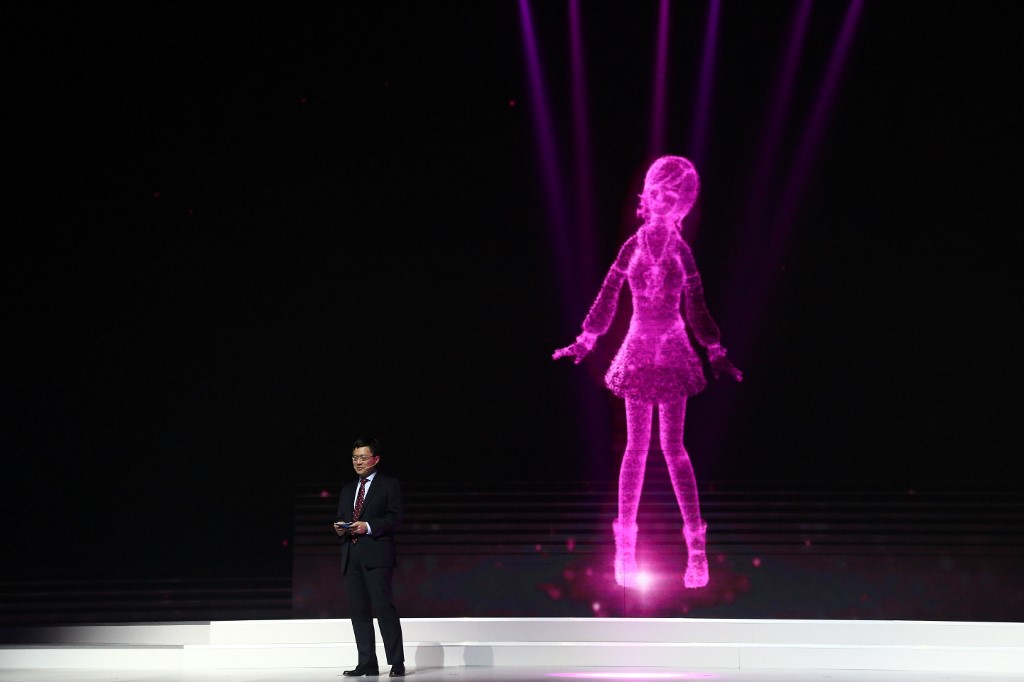(ATF) Xiaoice released a range of new AI products last week, including a ‘virtual human’ product line for individual users, plus an artificial intelligence customisation tool known as the X Suite. People can use this device to create their own ‘virtual boyfriend’ or companion.
Xiaoice, which means ‘Little Ice’, is an artificial intelligence initiative that began six years ago as a chatting robot. Spun off by US tech giant Microsoft Corp last month as an independent Chinese venture, the company aims to be a platform to power AI-enabled human-machine interaction, as it believes AI-human interaction will be common in the future.
Xiaoice is very confident in the product launched this time, because the “virtual boyfriend” has a certain market foundation, according to China’s ‘Most Geek’ news.
In May this year, the firm and Microsoft publicly tested 100 virtual boyfriends, in an evaluation process that lasted seven days. This is a virtual robot generated by the Xiaoice framework. Its personality and reaction mode can be completely determined by the user, and it can talk to the user like a real boyfriend. (There was no statement as to why only AI boyfriends were available).
After the seven-day test period, many users were reluctant to let go of their virtual boyfriends, even though Xiaoice’s team “terminated” their boyfriend. So, the company will launch the virtual boyfriend now.
The X Suite can support cross-platform applications such as Huawei, Xiaomi, and Weibo.
Users can search for “Xiaobing” in the Huwaei App Market, summon Xiaoice to Xiao Ai (the Xiaomi version of Alexa) or on Xiaomi phones, and follow Xiaobing’s private message on Weibo, and then enter “I want a virtual boyfriend” to follow the prompts to adopt your unique virtual boyfriend.
Behind this product is the powerful Xiaoice framework, which includes a core dialogue engine, multiple interactive senses, third-party content triggering and first-party content generation, as well as cross-platform deployment solutions, which involve natural language processing, computer voice, computer vision, and artificial intelligence content generation technologies.
It is hoped their total interactions with AI ‘boyfriends’ or companions will account for about 60% of the total global artificial intelligence interactions with AI.
Customisable companion
“This product brings artificial intelligence into the public domain. In the past, we always felt that products such as robots were very far away from ordinary users, but this self-customisable virtual boyfriend broke this barrier,” the company said in a statement.
During the release of the new product last week, Xu Xiang, product director of the team, said the Xiaoice framework gave up all copyrights of AI-generated content, and the content created using the X package will be fully owned by users.
Xiaoice says the biggest difference between the virtual boyfriend and other AI is that it is a “session-oriented” (connection-oriented) artificial intelligence framework, in which all parts of the technology work together to serve “full interaction” instead of focusing only on partial optimisation.
For example, in terms of the core dialogue engine, the framework will perform autonomous learning based on the content given by the user and organise the language like a real human, rather than simply responding to the user mechanically. This involves an active learning technology introduced by the team for the Xiaoice framework: when it finds that its knowledge is not enough, it will actively use search engines to grab more content from the entire network to supplement its knowledge. This process only takes a few minutes or seconds.
Xiaoice’s chairman Shen Xiangyang calls this “AI beings.” He believes that Xiaoice’s framework will lead to a new possibilities.
In the future, people will be surrounded by many types of artificial intelligence, and the number of AI ‘beings’ will exceed the total population.
Though this sounds like a bit of a fantasy, what the Xiaoice team wants to achieve with a virtual boyfriend is to combine the human nature of human interaction with a high occurrence of human-computer interaction. This is a better form of interaction between humans and AI, the firm says.
Xiaoice’s ambition in artificial intelligence field is have a physical body for these ‘beings’ in the future.
























